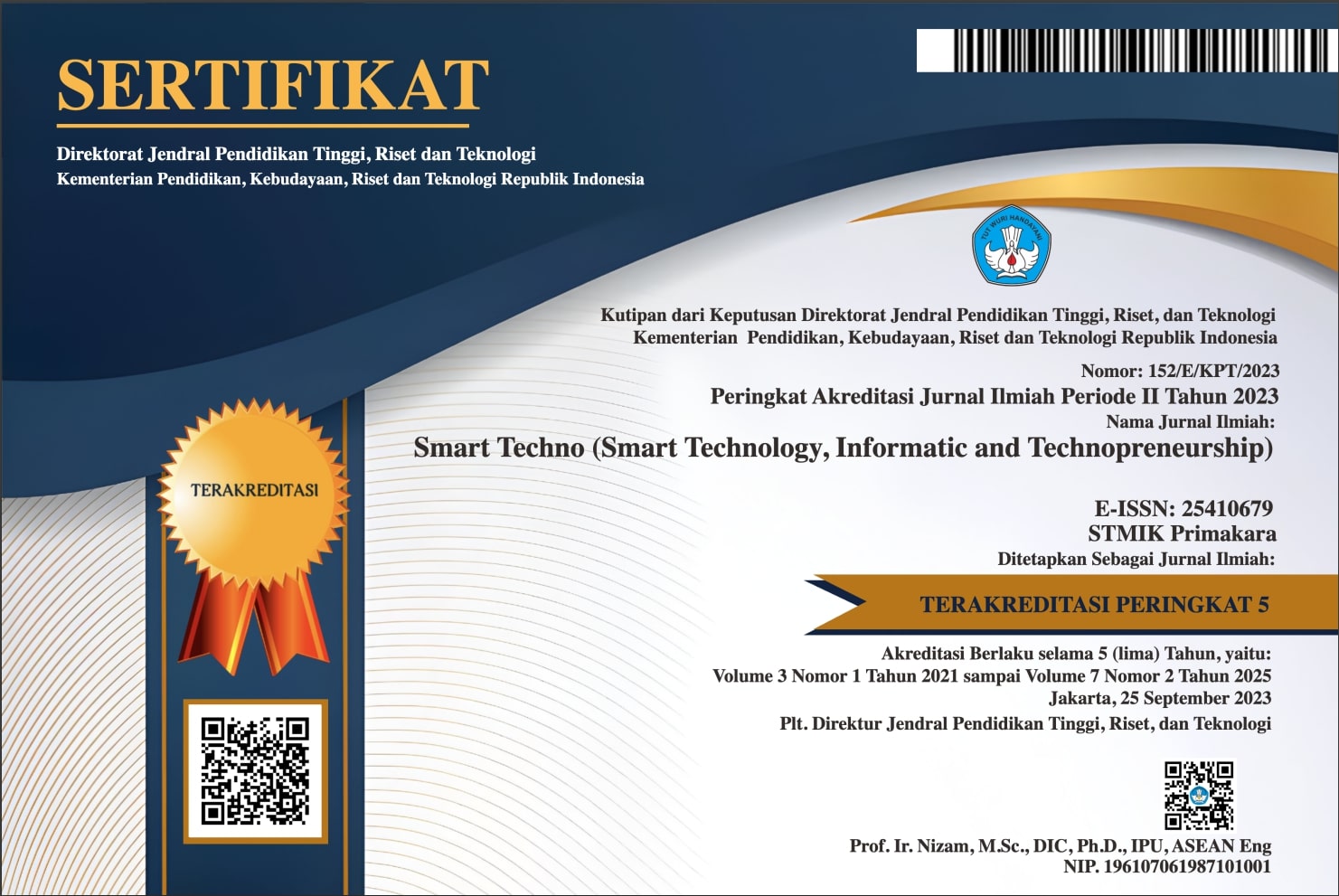Rancang Bangun Aplikasi Point Of Sales (POS) Terintegrasi Sistem Informasi Akuntansi Pada CV Mantu Sedana
Abstract
CV Mantu Sedana is a company engaged in the culinary business, in which the product sold is Balinese chili sauce. CV Mantu Sedana still uses the conventional method in their sales transactions and accounting records, where consumers who make purchases will get written notes and their accounting recording processes still use the manual method, namely by recording on books and agendas. Based on the writer’s explanation above and the needs of CV Mantu Sedana, the writer feels that it is necessary to build an application system or platform that can be used in the sales transaction process as well as accounting records at CV Mantu Sedana, which aims to make it easier for owners to monitor their business in real-time and increase consumer satisfaction. Design of Integrated Point Of Sales (POS) Applications for Accounting Information Systems at CV Mantu Sedana. The writer used the agile method in designing this application. The Agile method is one of the software development methodologies used in software development. In this study, the writer used an interview and observation research instruments. The instrument was addressed to the owner of CV Mantu Sedana which aimed to determine the needs for the system being designed. In this study, the writer used qualitative data types in which the data used were in the form of words, sentences, schemes, and images, in the form of descriptive non-numerical data collection. The results of this study indicated that in making application design at CV Mantu Sedana, it can provide solutions to companies in developing services to customers and problems the company faced. After conducting interviews on user satisfaction in using this point of sales application, thus the writer found that this application was able to overcome the problems and objectives of using this application itself.
Downloads
References
H.T.Herman, S.Rostianingsih and A. Setiawan, "Pembuatan Aplikasi Point Of Sales untuk Rumah Makan Dapur Rinjani," Infra, vol. 4, p. 6, 2016.
Arif Kurniawan and Nonot Wisnu Karyanto. “SISTEM INFORMASI POINT OF SALE (POS) PADA RUMAH MAKAN BERKAH ILLAHI” Melek IT, vol 3, 27-34, 2017.
Cornelius De’Eda, Hendri Yanto, “Rancang Bangun Perangkat Lunak Point Of Sales Berbasis Web CV. Sumber Baru Di Ketapang.” Jurnal ENTER, vol 1, 2018.
D.A.Hidayat, "Rancang Bangun Aplikasi Point of Sale (POS) berbasis Web dengan Pemanfaatan Trigger pada Distribution store CV.NMRQ," JustIN, vol. 2, p. 1, 2014.
J.A.Hall, Sistem Informasi Akuntansi, Jakarta: Salemba Empat, 2009.
A. Marina, S. I. Wahjono, M.Syaban and A.Suarni, Sistem Informasi Akuntansi : Teori dan Pratikal, Surabaya: UM Surabaya Publishing, 2017.
M. M. Ranatarisza and M. A. Noor, Sistem Informasi Akuntansi Pada Aplikasi Administrasi Bisnis, Malang: UB Press, 2013.
R. B'Far, Mobile Computing Principle, New York: Cambridge University Press, 2005.
T. Ramadhan and V. G. Utomo, "Rancang Bangun Aplikasi Mobile untuk Notifikasi Jadwal Kuliah Berbasis Android (Studi Kasus : STMIK Provinsi Semarang)," Jurnal Teknologi Informasi dan Komunikasi, vol. 5, p. 1, 2014.
I. K. Raharja, Pengembangan Sistem Informasi Menggunakan Metodologi Agile, Yogyakarta, 2017.
Copyright (c) 2020 Smart-Techno

This work is licensed under a Creative Commons Attribution 4.0 International License.
Authors who publish with the Smart Techno agree to the following terms:
- Authors retain copyright and grant the journal the right of first publication with the work simultaneously licensed under a Creative Commons Attribution License (CC BY-SA 4.0) that allows others to share the work with an acknowledgment of the work's authorship and initial publication in this journal.
- Authors are able to enter into separate, additional contractual arrangements for the non-exclusive distribution of the journal's published version of the work (e.g., post it to an institutional repository or publish it in a book), with an acknowledgment of its initial publication in this journal.
- Authors are permitted and encouraged to post their work online (e.g., in institutional repositories or on their website) prior to and during the submission process, as it can lead to productive exchanges, as well as earlier and greater citation of published work. (See The Effect of Open Access)







